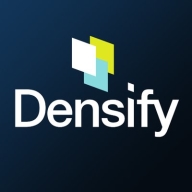

IBM Spectrum Computing and Densify are competing in the resource optimization category. Densify has the upper hand due to its superior features focused on proactive resource management and cost-effective solutions.
Features: IBM Spectrum Computing offers flexibility, diverse environment integration, and robust workload management. Densify provides advanced analytics, predictive insights, and proactive resource optimization for both cloud and on-premises.
Room for Improvement: IBM Spectrum Computing could improve in deployment complexity, real-time analytics integration, and reducing resource redundancy. Densify may enhance its customization options, broaden integration capabilities, and offer more comprehensive reporting features.
Ease of Deployment and Customer Service: IBM Spectrum Computing provides tailored deployment with strong customer service, although it's complex. Densify offers streamlined cloud-based deployment, noted for simplicity and easy implementation.
Pricing and ROI: IBM Spectrum Computing requires substantial initial investment with long-term ROI through flexible management. Densify features a cost-effective entry point with quick ROI due to its efficient use of cloud resources.
| Product | Market Share (%) |
|---|---|
| IBM Spectrum Computing | 1.0% |
| Densify | 0.9% |
| Other | 98.1% |


| Company Size | Count |
|---|---|
| Small Business | 1 |
| Midsize Enterprise | 1 |
| Large Enterprise | 9 |
| Company Size | Count |
|---|---|
| Small Business | 3 |
| Midsize Enterprise | 1 |
| Large Enterprise | 6 |
Densify is a hybrid cloud and container resource management platform that makes workloads self-aware of their precise resource requirements and automates the resource management and selection process. This solution helps you control your cloud spend and also helps your apps perform and scale better. Densify enables you to match your cloud requirements with the optimal cloud supply. Additionally, Densify is the only technology that leverages patented, predictive machine learning-powered analytics to perform advanced modeling of workload patterns, and provide precise optimization directives. It is ideal for cloud engineers, container platform owners, and IT finance.
Densify works by:
Densify Features
Densify has many valuable key features. Some of the most useful ones include:
Densify Benefits
There are many benefits to implementing Densify. Some of the biggest advantages the solution offers include:
IBM Spectrum Computing uses intelligent workload and policy-driven resource management to optimize resources across the data center, on premises and in the cloud. Now up to 150X faster and scalable to over 160,000 cores, IBM provides you with the latest advances in software-defined infrastructure to help you unleash the power of your distributed mission-critical high performance computing (HPC), analytics and big data applications as well as a new generation open source frameworks such as Hadoop and Spark.
We monitor all Cloud Management reviews to prevent fraudulent reviews and keep review quality high. We do not post reviews by company employees or direct competitors. We validate each review for authenticity via cross-reference with LinkedIn, and personal follow-up with the reviewer when necessary.